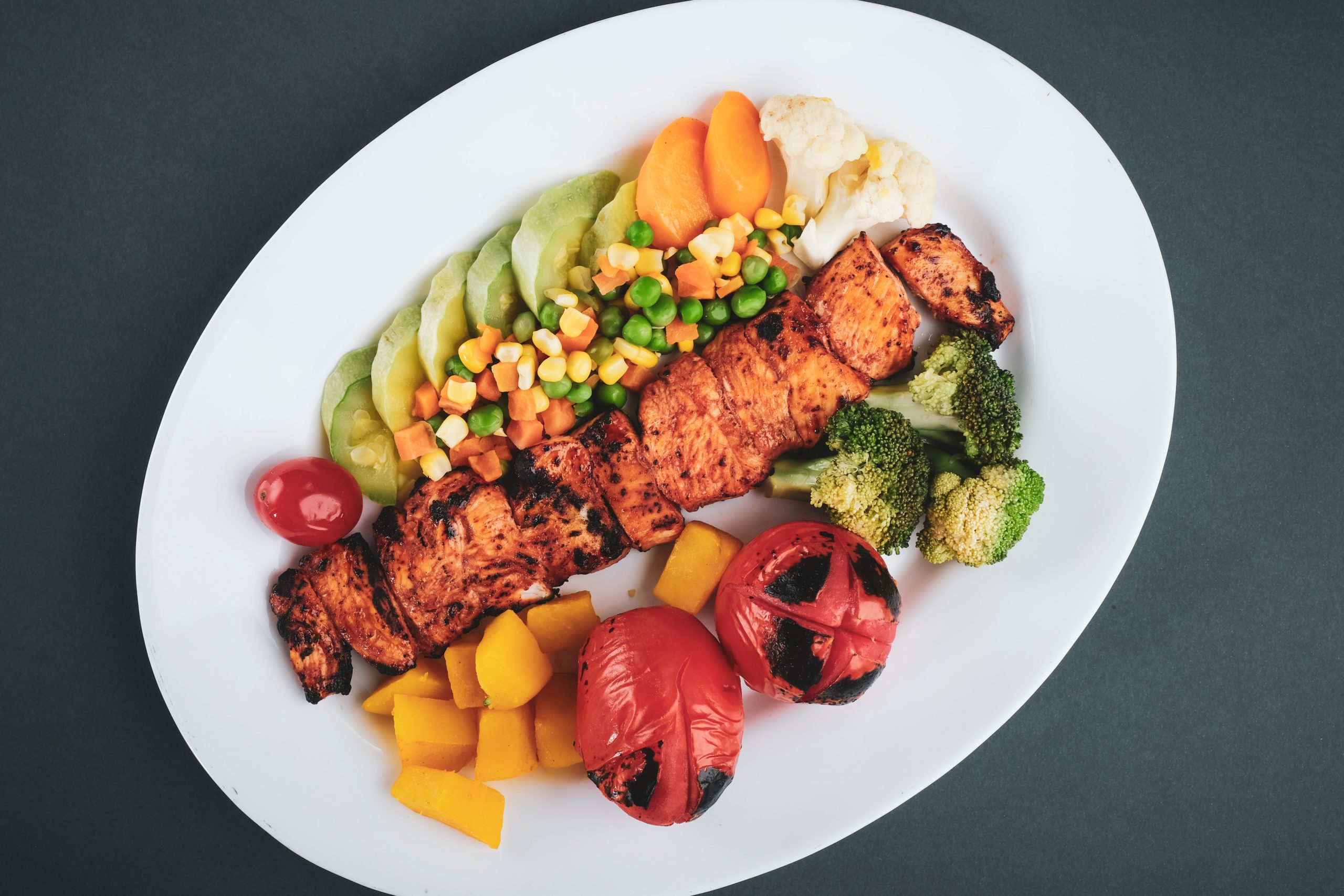Embarking on a weight loss journey can often feel like a daunting task, but what if you could propel your progress with foods that naturally boost your metabolism? “Fat Burning Foods For Weight Loss” unveils the power-packed edibles that not only support your diet but actually encourage your body to burn more fat. Imagine enjoying delicious meals that work in your favor, turning your body into a more efficient fat-burning machine. This article will introduce you to a variety of tasty options that can help you shed those pounds while still satisfying your taste buds.
Understanding Fat Burning Foods
When embarking on a weight loss journey, you might stumble across the concept of fat-burning foods. These are foods that purportedly require more energy to digest than the calories they provide, essentially producing a calorie deficit in the act of digestion.
The concept of negative calorie foods
Negative calorie foods are a category that some believe can directly contribute to weight loss due to the body expending more energy to digest them than the calories they contain. While this might seem like a magical solution, it’s important to understand that the science behind it isn’t rock-solid. No food has negative calories, but foods low in calories can still aid weight loss in a well-balanced diet.
How metabolism affects fat burning
Metabolism is the complex biochemical process where your body extracts energy from the food you consume. A faster metabolism increases the rate at which you burn calories, hence may contribute to weight loss. Some foods, due to their nutrient composition, can slightly increase your metabolic rate, contributing to fat burning over time.
Distinguishing between fat loss and weight loss
It’s essential to understand that fat loss and weight loss are not the same. Weight loss can be a reduction in muscle mass, water, and fat. Conversely, fat loss refers to a decrease in body fat specifically. The ultimate goal should be to reduce fat while maintaining or increasing muscle mass for long-term health and weight management.
Proteins: The Muscle Builders
Proteins are the building blocks of your muscles. Consuming enough protein can help maintain muscle mass and encourage a thermogenic effect, meaning it raises your body’s temperature during digestion, requiring more energy.
Lean meats and their thermogenic effect
Lean meats like chicken breast, turkey, and lean cuts of beef have a high thermogenic effect, which means your body uses a significant amount of calories merely to break them down. This effect, combined with their high protein content, can aid your weight loss endeavors by boosting your metabolism.
Plant-based proteins for weight loss
For those who follow a plant-based diet, sources like lentils, chickpeas, and black beans provide not just protein but also fiber, contributing to fullness and aiding in weight loss. Additionally, these foods boast a low fat content, making them an excellent choice for maintaining a calorie deficit.
The role of protein in satiety and muscle maintenance
Protein plays a crucial role in keeping you full after meals, which helps you resist snacking and overeating. Maintaining muscle mass is equally important as muscle burns more calories at rest than fat does, so eating enough protein is essential for muscle maintenance and, by extension, fat loss.

Fiber-Rich Foods: The Digestive Aides
Foods high in fiber can be incredible digestive aides. Dietary fiber can help keep your digestive system running smoothly, contribute to feeling fuller for longer, and maintain blood sugar levels.
Benefits of a high-fiber diet
A high-fiber diet is beneficial as it aids regular bowel movements, reduces cholesterol levels, and contributes to fullness which can prevent overeating. Including these foods in your diet can ultimately contribute to weight loss.
Top fiber-rich foods for weight management
Fiber-rich foods such as oatmeal, berries, apples, legumes, and whole grains are excellent for weight management. They not only help with regularity but also mean that you’re less likely to reach for unhealthy snacks throughout the day thanks to the satiating properties of fiber.
Understanding the impact of soluble vs. insoluble fiber
Soluble fiber, found in foods like oats, nuts, and seeds, dissolves in water to form a gel-like substance that can help to lower glucose and cholesterol levels. Insoluble fiber, found in whole grains and vegetables, adds bulk to your stool, which helps food pass more quickly through your stomach and intestines, promoting regularity. Both types are important for overall health and can aid in weight loss.
Healthy Fats: The Misunderstood Weight-Loss Allies
Contrary to popular belief, not all fats are enemies in the weight loss battle. Healthy fats play a vital role in helping you feel satisfied after a meal and support various bodily functions, including hormone production.
Why the body needs healthy fats
Your body needs healthy fats for energy, to absorb certain vitamins and minerals, and to build cell membranes. Plus, fats can help in regulating hunger through hormone release, which might make you less likely to overeat.
Omega-3 fatty acids and weight loss
Omega-3 fatty acids, found in high concentrations in fatty fish, flaxseed, and walnuts, aren’t just good for your heart. They may also help improve the metabolism of fat by enhancing the effects of certain fat-burning enzymes. This makes them valuable players in a weight-loss diet.
Identifying sources of healthy fats for a balanced diet
Seek out sources of healthy fats like avocados, nuts, seeds, and olive oil. Incorporate these into your meals for a well-rounded diet that includes these important nutrients while also helping you feel fuller for longer periods.

Low-Calorie Vegetables: The Nutrient Powerhouses
Low-calorie vegetables are your allies in both nutrition and weight loss. They are packed with vitamins, minerals, and fiber while being low in calories, which allows you to eat larger volumes without the guilt.
Cruciferous vegetables and their role in fat burning
Cruciferous vegetables like broccoli, cauliflower, brussels sprouts, and cabbage are high in fiber and low in calories. They help increase the amount of energy your body uses to digest food, potentially increasing your fat-burning abilities.
Leafy greens and appetite control
Leafy greens such as spinach, kale, and lettuce are not just nutritious; they’re also great for appetite control. Their high water and fiber content helps fill you up, which means you may end up consuming fewer calories overall.
How low-calorie vegetables enhance fullness
The bulk of these vegetables can take up space in your stomach, which helps to trigger the release of hunger-suppressing hormones and, as a result, helps in consuming less throughout the day, contributing to your weight loss efforts.
Fruits: The Natural Sweets
Fruits are naturally sweet and are much healthier alternatives to processed snacks. They come with a host of vitamins and minerals along with fiber and water content, all of which contribute to a healthy diet and can aid in weight loss when eaten in moderation.
Identifying low-glycemic fruits
Low-glycemic fruits like berries, apples, and pears have less impact on blood sugar levels and can be beneficial for weight loss. These fruits break down slower in your body, helping you feel full longer and avoiding spikes in blood sugar.
The connection between fruit consumption and fat oxidation
Some studies suggest that certain fruits can enhance fat oxidation, which is the process of breaking down fatty acids. This can potentially lead to increased fat loss as part of a balanced diet and regular exercise routine.
Incorporating fruits into a weight-loss diet without overindulging in sugars
While fruits are healthy, they do contain natural sugars, so it’s wise to consume them in controlled portions. Choose whole fruits over fruit juices to get the benefits of fiber and keep a check on your total calorie intake.
Spices and Herbs: The Metabolism Boosters
Spices and herbs aren’t just flavor boosters; they can actually play a role in your metabolism and, potentially, your weight-loss efforts.
Capsaicin and metabolism
Capsaicin, the compound that gives peppers their heat, can slightly increase your metabolism, encouraging your body to burn more calories. It might also reduce your appetite, leading to lower calorie intake.
Ginger and thermogenesis
Ginger is another spice that may have a thermogenic effect on the body, meaning it causes an increase in metabolic rate after consumption. It might also aid in digestion and suppress appetite.
Turmeric and its impact on fat cells
Turmeric contains curcumin, which has been studied for its potential to influence the formation and growth of fat cells. Its potential anti-inflammatory and antioxidant properties make it a proud member of the fat-burning foods compilation and a colorful addition to a healthy diet.
Whole Grains: The Energy Sustainers
Whole grains are essential components of a balanced diet, providing sustained energy, essential nutrients, and fiber to help with digestion and weight management.
Difference between whole grains and refined grains
The main difference between whole and refined grains lies in the nutrient content. Whole grains retain their bran and germ, which means they’re higher in fiber and other important nutrients compared to refined grains that have been stripped of these components.
The benefits of whole grains in a weight-loss diet
Whole grains can help you feel full for longer periods, aiding in weight management. Additionally, their fiber content can help stabilize blood sugar levels, prevent cravings, and maintain a healthy digestive system.
How whole grains help in controlling blood sugar levels
The fiber in whole grains slows down the absorption of sugar into your bloodstream, helping to control blood sugar spikes. This can not only aid in weight loss but also provide energy more consistently throughout the day.
Nuts and Seeds: The Hunger Suppressants
Nuts and seeds are dense in nutrients and healthy fats, which make them powerful in satiating hunger. They are ideal snacks for weight loss when consumed in moderation due to their calorie density.
Balancing calorie intake with nutrient density
Although nuts and seeds are high in calories, they offer a wealth of nutrients such as fiber, proteins, and healthy fats. Balance is key—consume them in small, measured amounts to avoid excessive calorie intake while still reaping their nutritional benefits.
The satiating effect of nuts and seeds
Nuts and seeds can help extend the feeling of fullness after meals, which means you’ll likely snack less and potentially consume fewer calories throughout the day. Flaxseeds, chia seeds, almonds, and walnuts are some excellent choices.
Choosing the right nuts and seeds for a fat-burning diet
When selecting nuts and seeds, opt for raw or dry roasted varieties without added oils or salts. This way, you get the full health benefits without unnecessary additives that may detract from your weight loss goals.
Key Strategies to Incorporate Fat Burning Foods
Integrating fat-burning foods into your diet requires strategy to ensure you maximize their benefits while still enjoying your meals.
Meal planning for optimal fat loss
Plan your meals around these fat-burning foods, ensuring you get a balanced intake of proteins, fibers, healthy fats, and carbohydrates. This approach can help sustain your energy levels, reduce cravings for unhealthy foods, and support your weight loss goals.
Portion control with fat-burning foods
Even with healthier food options, portion control is vital. Pay attention to serving sizes to prevent overeating and maintain a calorie deficit, which is necessary for weight loss.
Understanding the importance of meal timing
The timing of your meals can affect how your body processes food. Aim to consume your higher energy meals earlier in the day when you’re more active, and lighter meals as the day winds down. This may help keep your metabolism ticking optimally and support your fat loss efforts.
Remember, incorporating any of these fat-burning foods into your diet should be part of an overall balanced approach that includes a variety of food groups, regular physical activity, and adequate hydration. Consulting a healthcare professional or a registered dietitian can further personalize your weight loss strategy.




